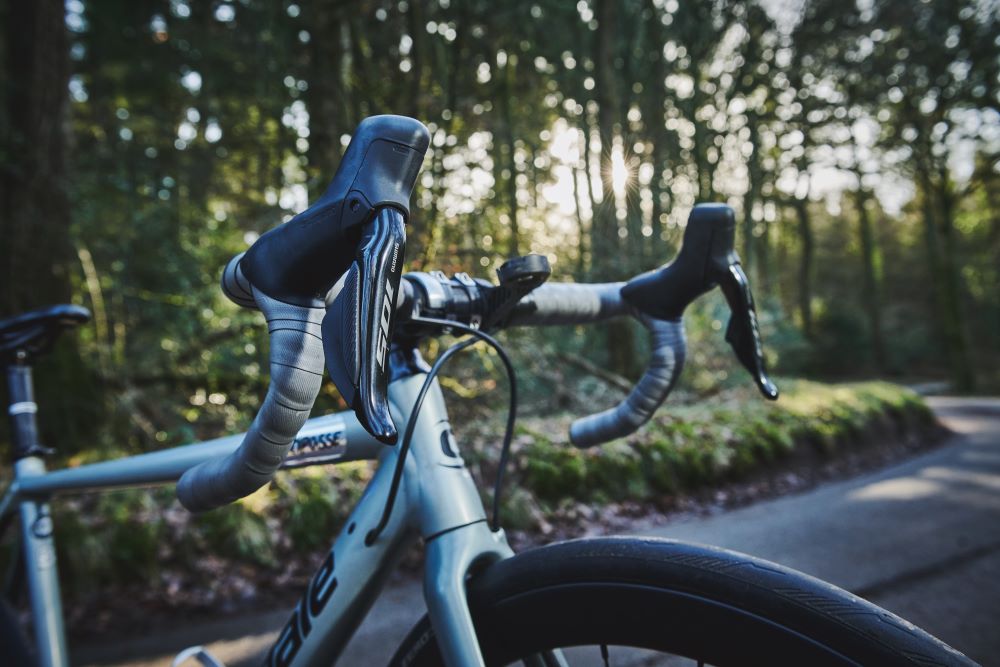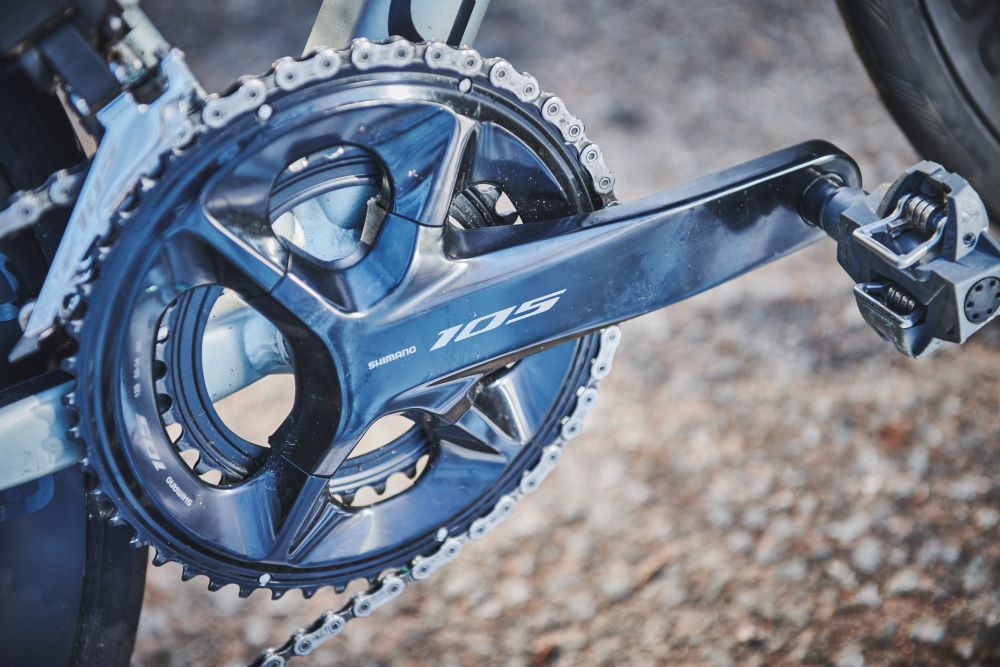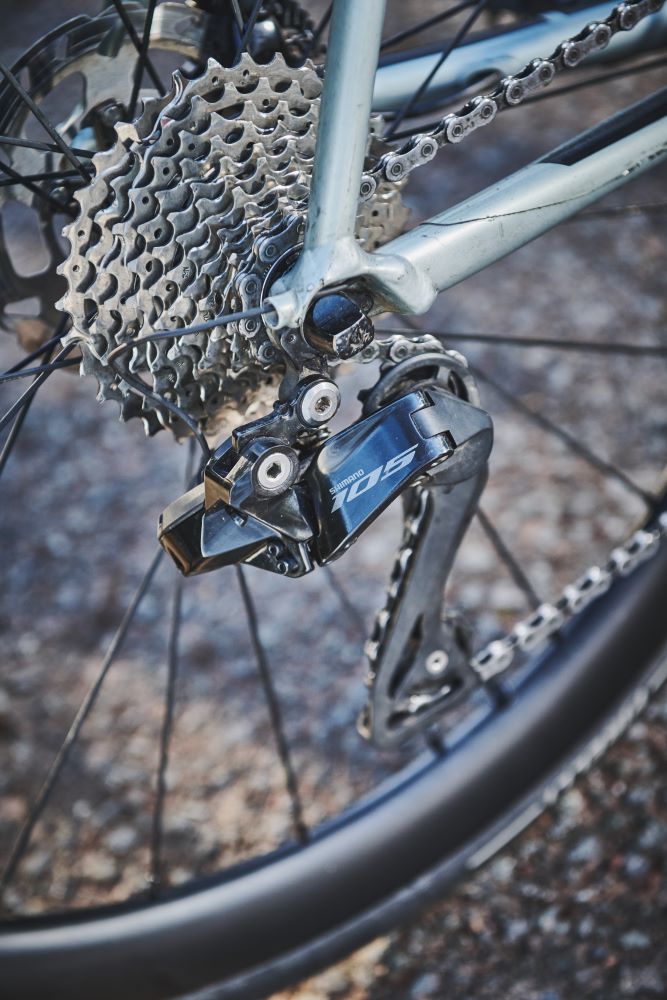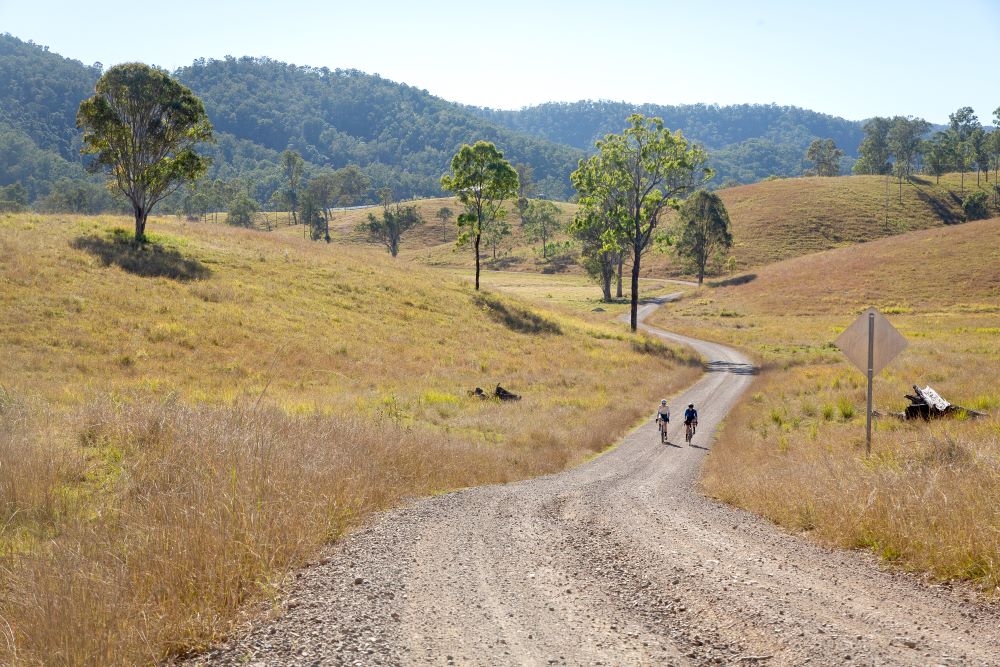
All the road groupset most of us will ever need
Words Charlotte Head Photography Joseph Branston
When Shimano released its 105 Di2 12-speed groupset in 2022, the feeling was that here, at last, was electronic shifting for the masses.
Historically, 105 has been Shimano’s mid-level groupset, straddling the gap between its top-tier and budget offerings, and this fully electronic version came in well over $1,000 cheaper than its big brother, Ultegra Di2.
However, at a price of $2,700-plus it’s still by no means cheap, so has the groupset of the people gone too fancy? In my opinion, absolutely not.
Moving to electronic (although a mechanical version still exists) and gaining a sprocket in the process, it’s clear that Shimano has given 105 a fully fledged makeover.
Not only is it functionally different but it takes on the sleeker aesthetic of its flashier siblings with a glossy finish.
The levers have been wholly redesigned, even from the existing Di2 bodies, with a slimmer profile and more compact design.
The shape freed up by the lack of mechanical shifting has allowed for the inclusion of an additional coin-cell battery in each lever, in theory bumping their lifespan from two to four years before needing a change.

Those familiar with Shimano derailleurs will remember that 105 previously came in either a short cage or a long cage version to allow different cassette sizes.
The latest model is only available with a long cage, necessary to accommodate the new stock 11-34t or 11-36t cassettes.
In keeping its traditional 52/36t or 50/34t chainring standard, 105 Di2 isn’t encroaching on Sram’s gravel-ready gearing, but it’s nice to see an everyman groupset that truly has the gearing to get almost anyone up almost any gradient without sacrificing its top end.
Slick shifting
As with the existing Di2 12-speed groupsets higher up the range, 105’s brain is in the rear derailleur, allowing it to eschew the junction box that came on older versions of Di2.
While this makes for a simpler setup, I personally struggle with the concept of putting the control centre in a place that’s likely to get bashed or broken.
It makes for a rear derailleur that costs a smidge over $450 and without which nothing else can function, but that’s not a specific criticism of 105, more a general gripe that applies to both Shimano and Sram.
One of the most lauded elements of Di2 is its improved shifting speed in comparison to its mechanical counterpart.
Internally speaking, the 105 Di2 front derailleur has most in common with the previous generation of Ultegra and Dura-Ace, which are said to shift roughly 45% slower than the latest versions because they use the older motor system.
As such, the shift between 105’s chainrings is marginally slower than Ultegra, but on a tangible level it’s still superb and light years above that of Sram Rival.
Even when trying to, I was unable to drop or jam the chain.
As for the rear derailleur, it’s virtually impossible to feel the difference between 105 and Ultegra.
The cassette doesn’t feature Hyperglide+ teeth, meaning shifting is ever so slightly less smooth and a fraction louder, but not so you’d notice.
While the lever bodies have been slimmed down, the actual shift paddles are virtually the same as on existing Di2 levers, and herein lies my only complaint about the shifting.

The buttons are narrow and, although some effort has gone into creating a tactile differentiation between the two, I found it very easy to click the wrong button.
This is mostly an issue when wearing gloves and, for those of us who struggle with numb hands, it can become an annoyance.
That being said, I did adapt to it relatively quickly, but it feels like such an easy fix that I don’t know why Shimano hasn’t acted on it yet.
Likely in a bid to manage cost, there are no hood-top buttons as seen on the higher-spec levers, and the shifters aren’t compatible with sprint shifters.
Customisation is available through the E-tube app, which offers everything from swapping button functions to adjusting shift ferocity and changing multi-shift options.
Don’t stop me now
The 105 brakes have inherited most of Shimano’s trickle-down technology, with a ‘lighter, smoother’ braking action than the previous model.
One element missing is the brand’s ServoWave system, where the initial pad travel is faster, thus engaging the brakes earlier in the lever throw.
This results in a comparatively sharper braking feel, as the transition from ‘off’ to ‘on’ is more linear.
In reality, I found there to be very little lacking in the new 105 brakes. There’s still ample scope for modulation, despite braking being powerful and consistent in all conditions.
They still do it all, so I think the decision to exclude ServoWave as a cost-saving exercise was a wise one.

My favourite element of the brakes, likely stemming from my previous life as a mechanic, is the enhanced clearance for the brake pads.
Shimano says there is 10% more space for the pads than on 105 mechanical, and this is a huge win in my books.
Even in the wettest, grittiest conditions, I barely suffered with rotor rub.
It’s a simple touch but it hugely enhances the ride experience and the ease of use for anyone servicing the brakes.
A balancing act
Functionally, 105 Di2 is exemplary for a groupset at this level, but weight and price must be taken into consideration as well.
Shimano claims a total weight of 2,992g, and the complete unit tipped our scales at 2,973g.
In comparable setups, that’s roughly 270g heavier than Ultegra, about 200g lighter than its counterpart Sram Rival AXS and almost the same as the higher-grade Force.
As for price, 105 Di2 comes in at around $1,300 more expensive than 105 mechanical 12-speed, $1,300 less than Ultegra Di2 and $550-$750 more expensive than Rival AXS.
The $2,743 certainly removes it from the realms of its blue-collar roots, but the mechanical option means there’s still a 12-speed 105 for all budgets.
And 105 Di2 may notbe cheap, but I do think it’s good value for money. Shimano 105 Di2 is arguably the biggest shake-up that the brand has thrown into its line-up in some time, and it has lived up to expectations.
It has brought electronic shifting to a more achievable price point while maintaining the majority of the performance benefits of Ultegra and Dura-Ace.
And adding a mechanical 12-speed option at a lower price has just helped to sweeten the deal.
It’s an outstanding groupset and, unless you are extremely pernickety on weight or tiny shifting differences, it’s all the road groupset most of us will ever need
THE SPEC
Model Shimano 105 Di2
Price $2,700 (approx.)
Weight 2,973g (dependent on setup)
Chainset 105 R7150, 50/34t
Shifters 105 R7170
Front derailleur 105 R7150
Rear derailleur 105 R7150
Brakes 105 R7170
Rotors SM RT70, 160/140mm
Chain SLX M7100
Cassette 105 HG710, 11-34t
Contact
bike.shimano.com


